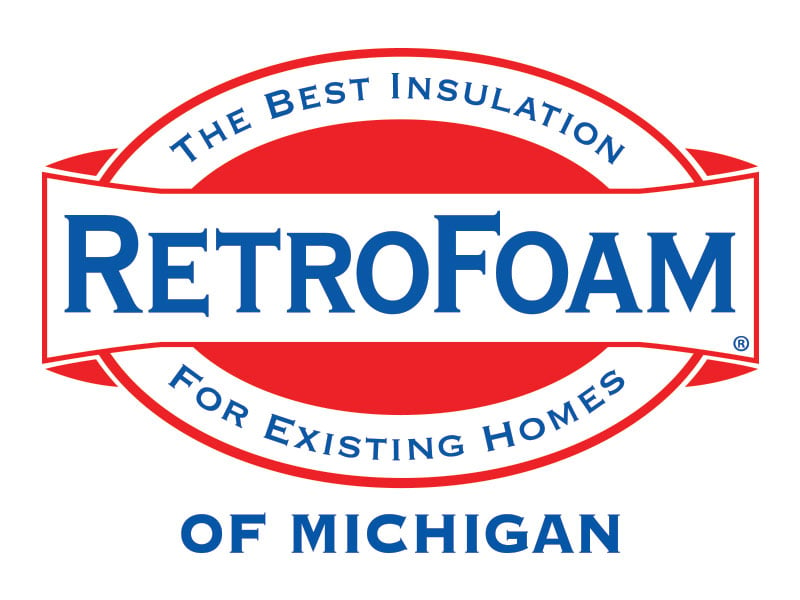What to Consider When Building an Energy-Efficient Home


Before you start designing the house of your dreams, take a step back and consider this -- what if your dream home could also save you money, reduce energy use, and feel more comfortable year-round?
Building an energy-efficient home is one of the smartest decisions you can make. From day one, you'll be setting your home up for long-term savings, sustainability, and comfort.
At RetroFoam of Michigan, we've been helping homeowners insulate their new construction homes for more than 20 years. Foam insulation is just one piece of the puzzle, but it's a big one -- and we'll get to that in a bit.
For now, let's dive into what goes into building an energy-efficient home and how smart design choices now can pay off big in the future.
Efficient Home Design Plans Start with the Whole-House Approach
When you're planning your new home, the U.S. Department of Energy recommends taking a whole-house approach to maximizing energy efficiency.
This means thinking through every part of your home's design and construction that impacts energy use. It's not just about one material or appliance -- it's about how every system in your home works together.
Work with your builder to consider the following:
- Your climate zone and building site conditions
- Energy Star-rated appliances and electronics
- High-quality insulation and proper air sealing
- Strategic lighting and use of natural daylight
- Efficient heating and cooling systems
- Water heating solutions
- Energy-efficient windows, doors, and skylights
To measure your home's performance, the DOE offers a Home Energy Score. It gives you a snapshot of your home's efficiency and identifies where you can improve.
Building Energy-Efficient Homes: Key Elements to Include
Designing and building an energy-efficient house means using smart construction techniques and technology.
Here are some DOE-recommended strategies.
Ultra-Efficient Homes
Ultra-efficient homes combine cutting-edge energy-efficient design with renewable systems like solar electricity and solar water heating.
Depending on your location, you might also benefit from passive solar heating and cooling or energy-smart landscaping.
Advanced House Framing
Also known as optimum value engineering, this method uses less lumber and reduces construction waste.
It also helps improve insulation coverage, reducing thermal bridging and improving energy efficiency.
Cool Roofs
A cool roof reflects more sunlight and absorbs less heat, helping your home stay cooler in the summer.
It's especially effective when paired with a solid air seal and foam insulation on your attic roof deck.
Foam Insulation: The Air Seal Advantage
Foam insulation does double duty -- it provides thermal resistance and creates a continuous air barrier.
That means conditioned air stays in, and unwanted outdoor air stays out.
Unlike fiberglass or cellulose, foam insulation doesn't allow air to pass through it, so your HVAC system doesn't have to work as hard. That's a win for your energy bills and overall comfort.
Build an Efficient, Comfortable Home with Foam Insulation
Now that you know the key components of building an energy-efficient house, it's time to take the next step.
Foam insulation offers the performance you need to create a durable air seal and regulate your home's temperature year-round.
If you're ready to build the energy-efficient home of your dreams, call us at 866-900-3626 to schedule your free estimate or fill out the form online. Don't forget to explore our Learning Center for more expert advice on how to build and live in a more energy-efficient home.
Key Points
- A whole-house approach considers all systems of the home for maximum efficiency.
- Smart designs use climate-specific strategies and materials like cool roofs, solar power, and passive solar heating.
- Foam insulation plays a critical role in air sealing, which is essential for building an energy-efficient home.
- The DOE's Home Energy Score can help you understand how your home stacks up and where you can improve.
- Long-term savings and comfort start with smart design and material choices during construction.
Related Articles
What is Home Performance with Energy Star?
How Much Money Will Foam Insulation Save on Monthly Energy Bills?
About Amanda Emery
Amanda previously has worked as a breaking news and crime reporter, TV news producer, and editor in Flint and Detroit. Throughout her career as a journalist, she has won several awards from The Society of Professional Journalists - Detroit Chapter and the Michigan Press Association. As part of the RetroFoam of Michigan family, Amanda uses her experience as a journalist to write content that will help educate homeowners on the benefits of foam insulation. When Amanda isn’t writing, she’s spending time with her husband and rescued huskies. She also loves knitting, making art, cooking, and hosting dinner and a movie night for friends and family.


